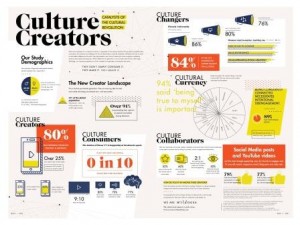
Over the past decade, there’s been a swift surge in the volume of data businesses have available at their disposal – specifically when it comes to website analytics and SEO. While this is good news, the fact remains that raw data without any ability to synthesize and interpret is quite useless. As a result, analytics dashboards have emerged from the shadows to allow for intuitive analysis that promotes faster and more accurate decision making.
“A modern business dashboard is a sort of information tool that helps you manage the hundreds of vital parts of your operations,”explains datapine, one of the leading voices in the industry. “This management tool simplifies large, complex data sets into manageable and meaningful visualizations that can be utilized to make responsive adjustments and ensure a smooth and profitable course of operations.”
Sounds great, right? The problem is that most analytics dashboards never come close to accomplishing what they’re intended to do. This is largely a result of a failure to design dashboards in the right manner.
If you want to maximize the value of your analytics dashboards, then you need to know what you’re doing. Designing dashboards that make sense is the only way to yield a positive return on investment. With that being said, here are a few pointers:
1. Use The Five Second Rule
“Your dashboard should be able to answer your most frequently asked business questions at a glance,” data expertEran Levy says. “This means that if you’re scanning for the information for minutes, this could indicate a problem with your dashboard’s visual layout.”
One quick way to make sure you’re developing dashboards that add value to your business is to analyze each one within the context of the “five second rule.” Within the first five seconds you – or anyone viewing the dashboard – should be able to find the information that’s sought after. If the information can’t be found within just a few seconds, then something needs to be tweaked.
2. Context Is Everything
When it comes to an analytics dashboard, context is everything.
The data, on its own, means very little. You need to use colors, graphs, text boxes, and layout to indicate to the viewer what the data means and why it’s important.
If you spend any time studying leading dashboards, you’ll notice that the context they provide is what sets their displays apart from the competition.
3. Use The Right Chart For The Job
The problem many businesses have is that they don’t understand the differences between various charts and end up creating dashboards that are confusing and misleading. Ultimately, it’s nearly impossible to overcome the wrong visualization selection.
“We can’t stress enough the importance of the right choice of data visualizations,”says datapine. “You can ruin everything with a missed chart. It’s important to understand what type of information you want to convey and choose a data visualization that is suited to the task.”
Familiarize yourself with different charts, graphs, and visualizations so you know exactly what task each is suited for. A careful understanding of each visualization’s purpose will help you craft better dashboards in the long run.
4. Less Is More
Minimalism is in when it comes dashboard design. This isn’t an art project where you’re trying to show off every possible technique you have in your repertoire. The goal is to do more with less so the viewer can easily consume and digest the insights and make good choices with the information presented.
Ironically, taking a minimalist approach is actually much more difficult than it would seem. You have to leave out elements that you would otherwise use under normal circumstances and carefully consider each and every design choice under the context of whether it makes the dashboard more valuable.
Putting It All Together
If you really want to make the most out of your website and SEO analytics, a robust dashboard is the way to go. While it’s easy to focus on the raw numbers and ignore something that seems so superficial, the reality is that raw numbers are only valuable if they can be interpreted and used. Focus on designing dashboards that make sense and a whole new world of opportunity will be opened to you.
* Adapted lead image: Public Domain, pixabay.com via getstencil.com
How to Design Dashboards That Make Sense
The post How to Design Dashboards That Make Sense appeared first on Search Engine People Blog.
(35)




